
Sep 7, 2021 | NEWS
We have any reason to thank God for the gift of life and the divine calling. It is truly to thank God for continuing to receive sacred vocations in our Congregation especially in our Region of Tanzania. The scriptures tell us that; the harvest is plentiful but the labourers are few, so we ask the Lord of the harvest to send many labourers into his field. Encouraged by these words of comfort we have any reason to thank God for having a new vocation in our Congregation especially in our Tanzanian Region.
In this year we are so happy to have 5 new Sisters of first Profession which held on 28.08.2021 in our Chikukwe Community. We thank God for that gift.
Also we thanking God for having 5 Novices in the same day; and on 29.08.2021 they entered 7 Postulant. What more can we say than to give thanks to God for His goodness that He gives us every day. As we continue to thank God for the gift of our vocation we are proud that those who are called continue to glorify God for their lives within the Congregation. It seems is the good sign of life in our Region by having a new vocation is like a child now the Region are growing and widening daily. Let us joined together to thank God for having 2 sisters on 28.08.2021, who fulfilled the 25º Jubilee of their religious vows. Glory to God in the highest, and on earth peace, good will toward men.
We commend them all and pray for God’s grace so that they may continue to love God more and give a better witness of their religious life.
From Region office,
Sr. Agnes Mwanajimba
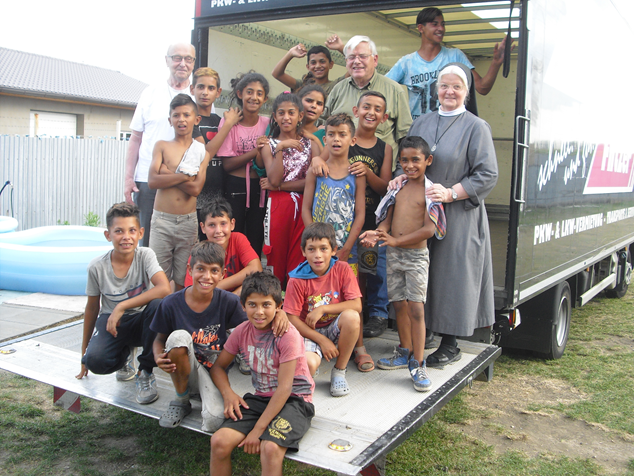
Aug 20, 2021 | NEWS
and I was there …
how did that happen?
Five years ago I took part in a retreat in Maria Laach and then I saw the appeal for donations for the Roma camp in Slovakia by P. Basilius. Among other things, I read – that mattresses are needed and I became aware … because it was precisely at this time that the mattresses had to be replaced in our senior citizen center in Cochem – “only – because they no longer corresponded” to the norm – therefore they should be disposed of. But they were rescued and taken into the camp.
Yes, that was my first contact with this project and I was and still am thrilled with the commitment – the Benedictines, especially Father Basilius, campaigned for this cause. It was clear to me from the start that we, the Sisters of Mary, would like to support that. I got more information so I could get in here
Tell about it in our house, in the women’s community and with my friends.
At our Advent, Spring and Autumn Bazaars and all the other events in the house, there was always a stand – with a wide variety of things. The proceeds were then intended for “my Rome children”.
Of course, this further strengthened the connection and every time a transport was planned, I started a call on site and I am overwhelmed by how donation-happy the employees and the Cochemers are. So we can do something for these people in our prosperity.
After each tour everything was reported in detail and it became clear to me – I have to go there too.
I had already planned to be there for the summer tour last year … but … Corona thwarted my planning, also in autumn.
But now the time had come…. Mr. Lingenthal informed me in June that a trip is planned for the end of July. Of course I was enthusiastic about it and even more – that Father Basilius is going with me.
But I had to do a lot for my absence in my convent with my fellow sisters who had grown old plan – and organize – because they cannot be alone.
But I thought … if it should be that I should go with you – this cannot be a problem and so it was. A co-sister came to represent and started on July 27th.
Arrived in Maria Laach, the Cologne runabout was already in front of the camp and it was already invited.
After P. Basilius
The travel prayer and travel blessing had given – our journey – which was so professionally planned and prepared by Mr. Michael Lingenthal – started.
I was just curious what to expect…. the long drive, the border controls, vaccination control … .. traffic jam … etc.
We were all surprised that there were no complications on the whole trip (there and back).
After an overnight stay at the Inn – there was a meeting with the ambassador in Bratislava.
Yes, and on July 29th we got closer and closer to our goal and the tension increased.
In the communication center of Caritas we were expected and welcomed happily by the team of employees and the children.
After unloading, there was a little candy for the hard-working helpers and only bright children’s eyes.
The children soon went home.
In the evening we met with the staff there in the center, talked and of course ate together. Mr. Rado was the interpreter – not just me but everyone felt comfortable – you could feel it.
The next day our ways parted – because Mr. Lingenthal and Mr. Rado had a conversation with the mayor in Secovce.
Father Basilius and I were picked up by Sister Bernadetta (Redeemer Sisters) and the interpreter, Mrs. Kristina, in Trebisov – we were with the mayor there – Sister Bernadetta knows well and is very Rome-friendly.
After this meeting we went to Sister Bernadetta’s convent – something completely new for me, because the 3 sisters do not live in a convent – but in a prefabricated building on the 5th floor.
The hospitality with them could be felt immediately – because it smelled of fresh cake, which was then served immediately.
It was a very good atmosphere – we couldn’t speak Slovenian and the sisters couldn’t speak German – but we still got on very well.
Sister Bernadetta then showed us briefly the Rome camp in which she works.
For lunch we went back to the Caritas center.
Soon the children came and the bathing fun began for them.
Very disciplined and happy children
That afternoon we also went to the camp on site. Some children have accompanied us because they live there with their families.
On the way there I became very different,
because something like that –
in my whole life I have
not seen yet
For me they were decisive encounters –
with this poverty and the people.
I imagined the situation there was bad
but the reality was much more extreme –
you can’t imagine it …
you have to see it …
I am very happy that I was able to take the opportunity and ride with them.
Yes, I have been newly motivated to be grateful myself and I will continue to contribute to these people in the future –
even if it is only :
A drop in the bucket is up.
It is worth it….!!!!
I would like to take this opportunity to express my special thanks
To the wonderful tour company –
Father Basilius, Michael Lingenthal
And all the many, who accompanied us with their prayers.
Thank you very much !!!
Sister M. Felicitas
(from Cochem)
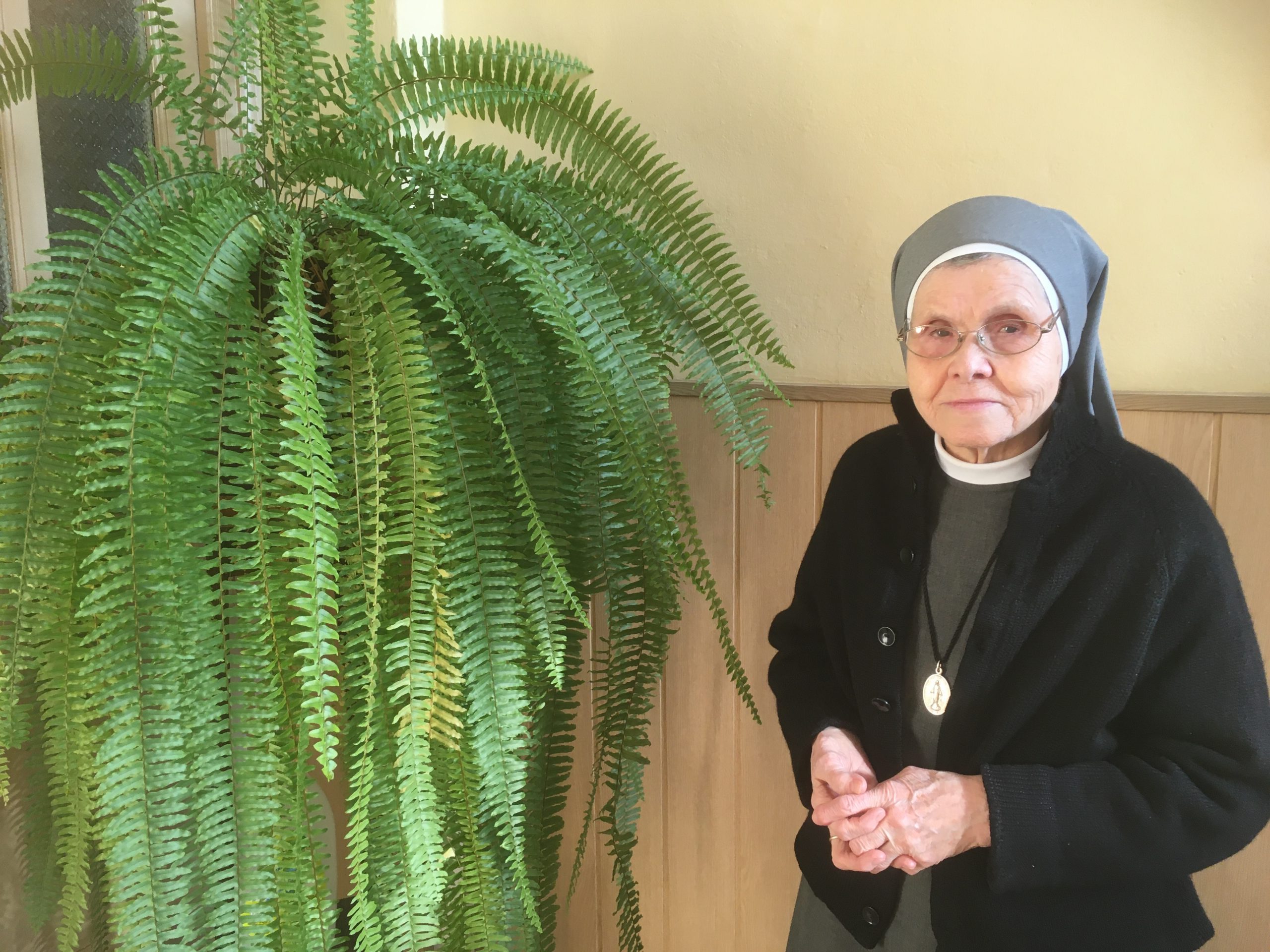
Aug 15, 2021 | FORUM, NEWS
I would like to share a story that happened while I was working in a hospital in Naples. I will start my story with how it happened that I became a nurse, went to Italy and at a miracle in the hospital ward.
I entered the Congregation when I was 20 years old. I started my candidacy. I remember very well one of the first words that Mother superior (Mother General representative in Poland) said to me then: “The candidate will be a nurse”. These words were very memorable to me, but with time I had to forget about them…. but Mother superior did not forget them.
I started my novitiate. We had various lectures during this time. There was also one sister from Katowice (I don’t remember her name) who taught us how to give injections and how to perform basic nursing activities for the sick.
When I was in the second year of the novitiate, we were informed that the sisters were to be transported to Otorów near Szamotuły, to a labor camp. I remember when Mother superior made the decision to strip the novices from their sisters in order to protect them from deportation. They were to take their personal belongings to their family homes. I was also supposed to pack my things, take them to my family home and come in secular clothes to the sisters’ community in Nysa. And so I did.
The sisters in Nysa welcomed me kindly. Soon they put me in the habit that was left by my deceased sister. Although it did not fit me and was too big for me, I was happy to be able to wear it again. Unfortunately, I did not enjoy it for long, because soon at the gate, someone dropped us a letter informing us that they wanted to take us to a labor camp, so they ordered me to undress again. It must have happened about three times when they dressed and undressed me like this, but I knew it was the only way to save me from deportation.
Herezwit’s sister was in Nysa, she ran a tailoring course for girls. Since I was already studying sewing as a teenager in business school, I started helping her learn sewing. After a year in Nysa, Mother superior “remembered” what she told me when I was a candidate and that is why she moved me to Jaszkotle. There, in addition to working in the house, I visted the sick in the villages and gave them injections. I went from Jaszkotle to a nursing school in Warsaw for two years. After graduating from school, she returned to Jaszkotle. Then I was transferred to Ścinawa, where the sisters worked in the Health Center: in the delivery room, in the vaccination center and in the surgery room. There I was supposed to be a superior. I remember how I felt sorry to leave Jaszkotle and when we got off the train with my sister Helena, who was taking me away, she noticed that I was sad because I was going into the unknown, I did not know who I was going to work with. She started showing me the advantages of this place, saying: “look how nice it is here, the stream flows here, the birds sing so nicely” and then I replied: “but it’s so strange”. But God was with me. I started working at a vaccination point and traveled to the villages to visit sick people. There were 15 villages to handle. I worked there for 10 years.
- To this day, I can hear the ringing of the telephone and a voice in the receiver that says: “Sister Vincentia, you will go to Italy. Get ready and quickly because the director of the hospital wants one sister to come to work in the hospital ward ”. I must admit that I felt sorry to leave because I got close to my sisters and people. After all, I didn’t know Italian and I was going again into the unknown.
As I have already mentioned, I came to Naples without knowing the Italian language. I started working in a hospital, people welcomed me very kindly. They supported me not to worry about the language, but to learn patiently, at least two words a day and in some time I will be speaking perfectly. And so I did. Despite the unfamiliarity with the language, I started working in the ward right away and only thanks to God’s care and help I did not make any mistakes.
People from the hospital liked to work with us – sisters, they made us feel it more than once. They trusted us. They confided in us with their various family and marriage problems, and we gave all these matters to God in prayer.
During my work in the hospital, a miracle happened that I would like to tell you about.
One day, in the ward where I was working, there was a woman who gave birth to a baby boy. After giving birth, her health began to deteriorate. She had the so-called eclampsia (this is eclampsia that occurs as seizures or loss of consciousness in pregnant or postnatal women). This condition lasted for two weeks, she felt into a coma, she did not react to anything. Doctors did not give her a chance to survive. I felt very sorry for this woman, she had just given birth to her first child and was going to die soon. Every day she was visited by a midwife who performed nursing activities for her. One day I met her in this lady’s room. I asked “will this patient really die?” She replied that “there is no salvation for her anymore.” Then I told the midwife that I had the oil from the wonderful place of Saint Anastasia with the painting of Our Lady dell’Arco, and I wanted to anoint the patient with it. (Let me just mention that the Dominican fathers who look after this sanctuary on the day of the indulgence always bless the oils that people can take away.)
I also proposed a joint prayer for: either God give her a peaceful death or restore her health. She responded to it willingly. I remember how I knelt on one side of the bed and the midwife on the other. And just as it is done in the anointing of the sick, I made this sick woman a cross with this oil on the forehead, on the hands and on the feet.
Our prayer did not last long. After a while the lady opened her eyes and sat down on the bed. We cried out. After a few days, she returned home with the baby.
Our Lady saved her!
It was one of the most moving events that I experienced in my 21 years working in a Neapolitan hospital. I remember that time very well and with great sentiment.
S.M. Vincencia Wróbel
* * *
The beginning of the cult of the Virgin Mary with the title of Madonna dell’Arco is associated with the episode that took place on April 6, 1450, on Easter Monday, in Saint Anastasia (today in the Province of Naples).
At the edge of the field, there was a chapel with a painting (hence the names Madonna dell’Arco and Pomigliano d’Arco) under the arch of the aqueduct, with a painting of our Lady with Baby Jesus.
During a village festival, young men played “palla a maglio” (ball with a hammer) on the field. The game consisted in hitting a wooden ball with a hammer, the one who made the ball fly further won. One of them missed and lost the game, so the ball hit the linden tree, whose branches partially obscured the wall covered with the image of our Lady with the Baby Jesus. The loser in a fit of anger, picked up the ball and, cursing, threw it violently at the sacred image, hitting it on the left cheek, which began to bleed as if it were a living body. The news of the miracle quickly spread across the country, reaching Count Sarno, a local nobleman, the Great Executioner of the Kingdom of Naples. He released the young man, but after observing the miracle and carrying out a shortened trial, he sentenced him to be hanged, on the same July that sheltered the image of the Mother of God. After twenty-four hours, the tree was withered
These miraculous events sparked the cult of the Madonna dell’Arco, which immediately spread throughout southern Italy. Crowds of believers poured into the miracle site, so it was necessary to build a small church out of the offers received to protect the holy image from the elements.
http://www.santiebeati.it/dettaglio/91177
https://www.fanpage.it/napoli/la-storia-della-madonna-dellarco-e-dei-suoi-miracoli/
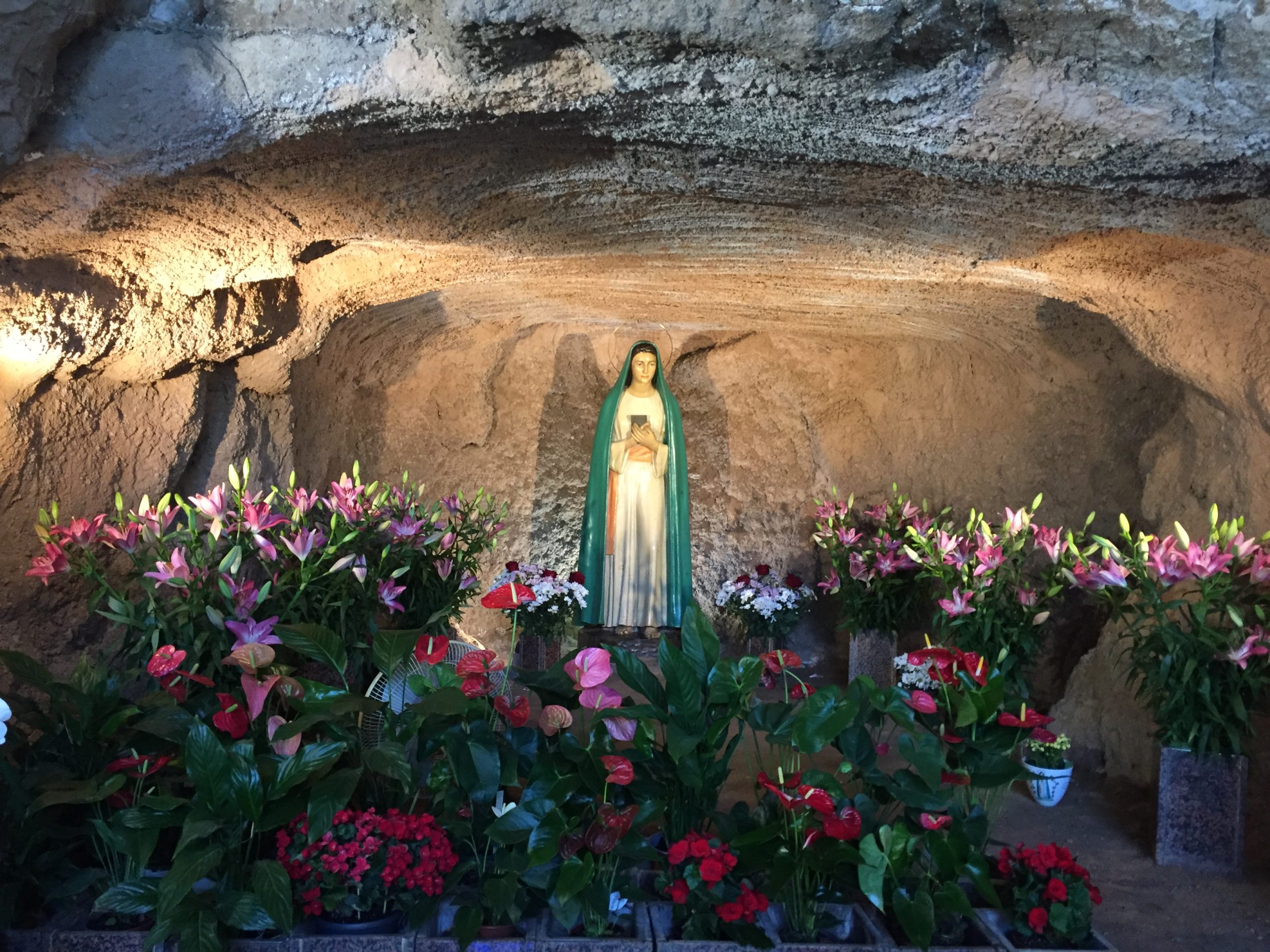
Aug 14, 2021 | FORUM, NEWS
The Three Fountain (Three Springs) on Via Laurentina in Rome is a well-known place, because it is the place where the martyrdom of St. Paul took place. Legend has it that when St. Paul was beheaded as a result of the persecution of Nero, his head bounced off the ground three times before stopping. Suddenly, three springs gushed out of the ground, that is why this place is called “Le Tre Fontane”, or “Three fountains”.
Near the place of the martyrdom of St. Paul, the Mother of God appeared, but let’s start at the beginning;
In 1913, in a stable on the outskirts of Rome, Bruno Cornacchiola was born. He was not baptized until his father returned from prison. He grew up and grew up in the godless environment of Roman slums, where almost all criminals and prostitutes lived. There were constant arguments, curses and beatings in Bruno’s house. The older ones ran away from home at night. One day, when Bruno was wandering around the building, a monk became interested in him and took him to a convent. He was fed and washed there. The sisters started teaching him the catechism. After 40 days of preparation, sixteen-year-old Bruno received his First Communion and the sacrament of confirmation. At the age of 20, he was drafted into the army. After leaving the military service, Bruno Cornacchiola married a girl he had known from childhood and only thanks to her insistence, he agreed to a church wedding. Then Bruno joined the Communist Party. He went with the Italian army to Spain for the civil war, where he began to spy for the communists. In Zaragoza he met a German soldier who had impressed him a lot, he belonged to a Protestant sect and breathed hatred towards the Pope and the Catholic Church. Since then, hatred of the Catholic Church in Bruno grew to such an extent that he bought himself a dagger and wrote “Death to the Pope” on it. After the end of the war, he returned to Rome and began to work as a tram conductor. It was during this time that he made contact with Seventh-day Adventists. Bruno was very committed and zealous in fighting the Catholic Church, the cult of the Mother of God and the Pope, and did his best to convince as many people as possible and make them adhere to the Adventist sect. This prompted him to deliver a speech in Piazza della Croce Rossa, in which he was supposed to ridicule the worship of the Eucharist, the dogma of the Immaculate Conception of the Blessed Virgin Mary. It was a great honor and an opportunity for him to become a pastor.
For this reason, on Saturday, April 12, 1947, were going to Ostia with his children; 10-year-old Isola, 7-year-old Carlo and 4-year-old Gianfranco. They missed the train, so he decided to go to ‘’Via Laurentina alle Tre Fontane’’ the three fountains’’ to prepare his speech in peace.
It was a beautiful sunny day, the children started to play in the eucalyptus forest and Bruno was preparing his speech. There was a grotto near where they were. Bruno checked from time to time where the children are and what they are doing. One moment he did not hear the answer of the youngest son, he started looking for him very concerned. He reached a nearby grotto and found a child kneeling with his hands folded in prayer. Bruno called the other children. Upon arriving, they also kneeled in front of the “beautiful lady” who was in the grotto and whom only Bruno could not see. Bruno was terrified, his children were pale and motionless, he did not know what to do, he worried about his children, in his helplessness for the first time in a long time he asked for the Lord’s help with all his heart. At this point, the darkness of the grotto brightened and he also saw a “beautiful lady”.
She was about five to seven feet, had a white dress with a pink band around her hips, dark brown hair and a green cloak around her head and hips, and hold a Bible in her hands. The Lady introduced herself as the “Virgin of Revelation.” She said: “I am the Virgin of Revelation, and Revelation is the words of God that speak of Me as well. You are persecuting me, but it is high time you stop this. Come back to the holy communion of the Catholic Church. ”The first Fridays of the Month offered to the Sacred Heart of Jesus, which you celebrated, encouraged by your concerned, faithful spouse, before you finally embarked on the path of error, saved you. She talked to Bruno for an hour and a quarter: she explained to him the meaning of prayer, invited him to confession and delivered a message to the Pope.
Finally, she smiled, bowed and gradually disappeared, leaving only a beautiful scent in the grotto. Before she left, the Virgin of Revelation left him a sign, dispelling his doubts, confirming the credibility of God’s message, and rejecting Satan’s actions. The sign was about the announcement of Bruno Cornacchiola’s future meeting with the priest, who would verify the truth of the apparition. After returning home, Bruno told his wife what happened and asked her forgiveness for his earlier behavior. Bruno Cornacchiola had subsequent apparitions on May 6, 23, and 30.
On October 5, 1947, on the feast of Our Lady of the Rosary, the largest rosary procession in the history of Rome took place. It began in St. Peter and walked through the streets of the city to the grotto of Tre Fontane. Three pairs of white horses pulled a cart with a large statue of the Virgin of the Revelation blessed by Pope Pius XII. At that time, the Holy Father consented to the public worship in Tre Fontane and entrusted the Conventual Franciscans with pastoral care over pilgrims coming to the place of the apparitions. This place became a destination for pilgrimages, where many healings and conversions took place.
On April 12, 1980, the 33rd anniversary of the apparitions, 3,000 people witnessed the solar miracle. This phenomenon repeated itself two years later ..
Bruno Cornacchiola also met with successive popes: on July 8, 1959, he was received in private audience by Pope John XXIII, and on October 17, 1973, he met with Paul VI. He was also at a private audience with John Paul II.
Thanks to the decision of Pope John Paul II, on March 17, 1994, Cardinal Camillo Ruini issued a decree ordering the construction of a church on the site of the apparitions, and on April 2, 1997, St. John Paul II gave this church the title “Holy Mary of the Third Millennium in Tre Fontane”.
Sr. Weronika Wojciechowska
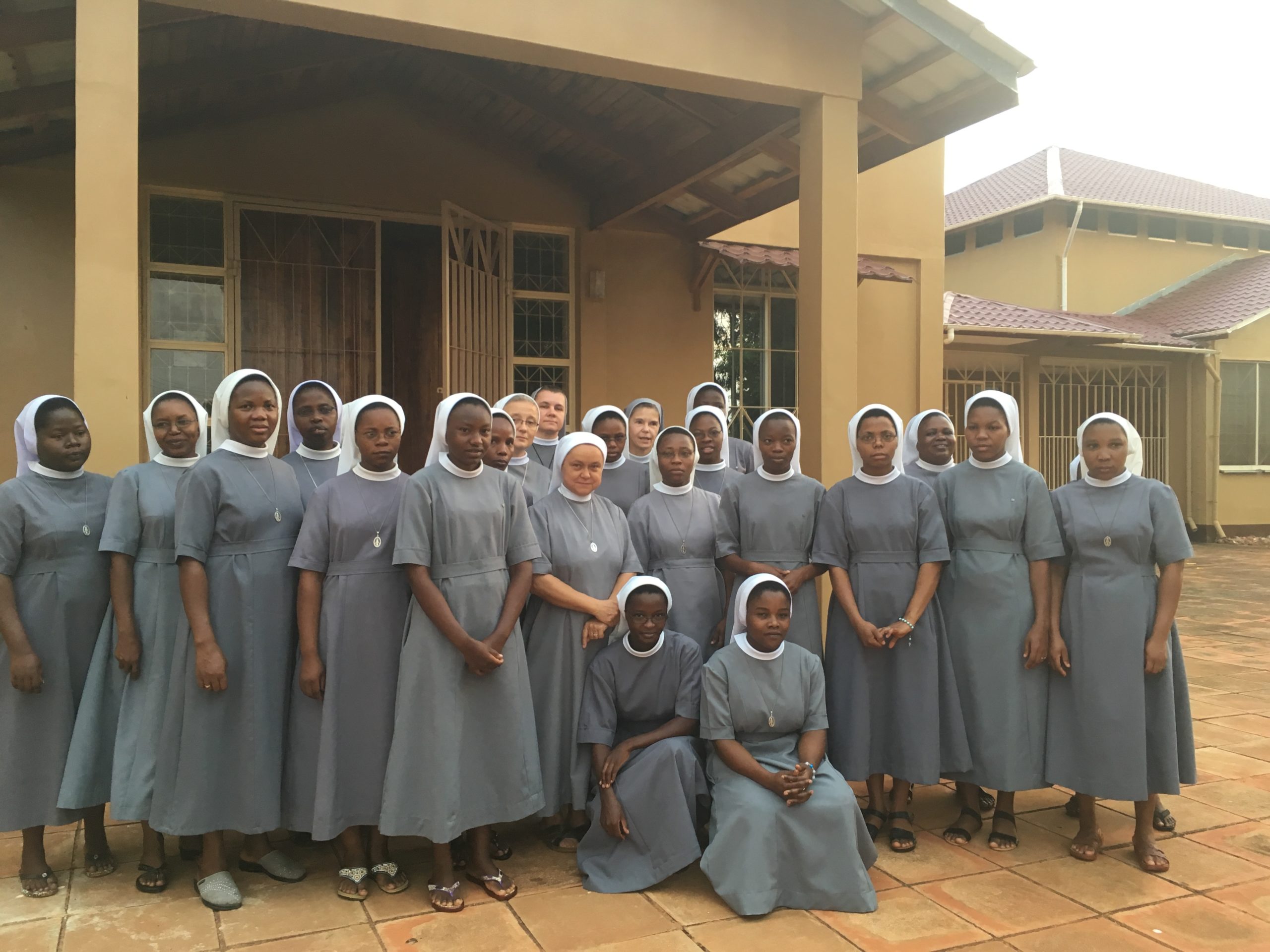
Jul 27, 2021 | FORUM, NEWS
We live in times of enormous human possibilities. Even 50 years ago, the current lifestyle of people was unattainable for those times, even in the wildest dreams. Today, thanks to technical inventions and the ever-developing globalization in many areas of our lives, one has the impression that the world is at our fingertips, open to every human being, and what we will do with our lives depends only on our decision. In such a situation, choosing a simple, poor life in a monastery may seem completely absurd to contemporaries. For many people, religious life is losing its value today, becoming a kind of “religious folklore” or a medieval relic. Other roles of consecrated persons are perceived mainly in terms of social activity, which at present, with well-developed social institutions, does not play such importance as before. So, you get the impression that the time of religious orders is slowly coming to an end. In such thinking, the fact of the decreasing number of vocations to consecrated life in Europe can also confirm.
However, are we really dealing with a crisis of religious life today, which has become obsolete in the modern world, or is there a world around us in which basic and natural values, such as faith in God, love as a gift of self, truth, goodness and beauty? began to be a misunderstanding?
There is no doubt that in today’s world, spirituality has become one of the most stunted areas of life for many Christians. On the one hand, the weakening of faith, and on the other hand, the more and more felt, though perhaps not realized, desire of God the Creator – this is the drama of contemporary man. The witness of consecrated life has never been so necessary in history as it is today. It does not lose its sense, but it is much more difficult, because it is to fulfill its role in a culture that has chosen individualism as its hallmark. Consecrated life as a path of service, love, self-giving for the sake of often neglected, difficult and needy people stands in complete opposition to today’s mentality.
The essence of the vocation to consecrated life is not the activity, but the identity of the consecrated person. A vocation to religious life is a vocation to a unique bond with Christ that cannot become obsolete. Religious community is to show the passion of life for God – this is its task in the world. Of course, this does not mean that religious life would be the best path for all people. However, this life, which some Christians choose by God’s grace, helps others not to get lost in the variety of ways and offers that exist in the modern world.
Consecrated life should convince you that it is God who gives the experience of happiness that the world seeks and cannot find anywhere else. Money, power, or feelings will not give it unless it is integrated into the experience of faith. It is God who is the Lord of everything, it is up to us to fulfill the task entrusted to us.
S.M. Sybilla Kołtan
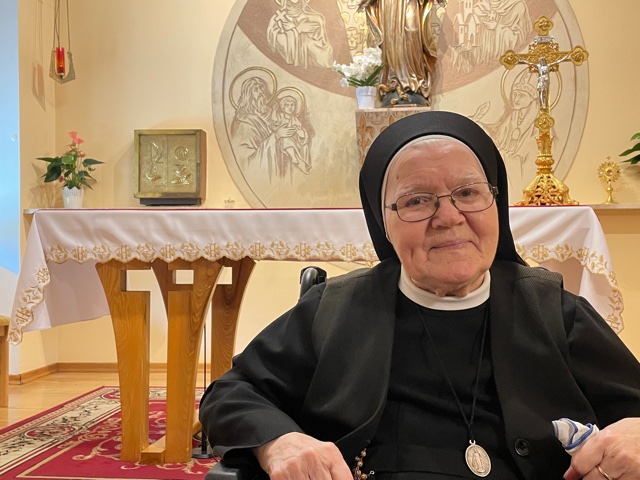
Jul 14, 2021 | FORUM, NEWS
Since this year is proclaimed by Pope Francis “the Year of Saint Joseph”, I would like to share with you my friendship with this saint.
Devotion to St. I have always had Joseph, before I entered our Congregation, I knew the litany to St. Joseph by heart. I always tried to entrust many things through his intercession, especially … financial matters … He never refused to help me.
I remember two specific situations in my life.
While I was in Bardo Śląski, the whole community of sisters knew that I had a special devotion to St. Joseph. I was the supervisor then. The house was very large and constantly something broke or needed renovation. Unfortunately, there was not enough money for it. I prayed to my Friend, St. Joseph to help us with these financial matters.
One morning, when I was going down to the chapel, I saw in the corridor in front of the entrance to the chapel that there was a statue of St. Joseph with an envelope in his hand. (I will just add that this figure has never stood there before). I well remember the words I said aloud then: “Oh, its and you, how did you get here?” After a while as I spoke these words, from down the hall, I heard the laughter of the sisters who hid around the corner. It was the youngest sisters in the community who put this figure. As I mentioned, Joseph had an envelope in his hand and, as it turned out, there was money in it. I admit that I was very happy because we were able to renovate such a large room, which we could allocate for a retreat for pilgrims coming to our house and for joint sister meetings.
I never found out where the money came from and who gave it to us (the sisters never told where it came from). However, I believed that it was St. Joseph took care of it.
The next situation happened when we needed money to renovate the kitchen.
Trusting in the help of St. Joseph, I entrusted the whole matter to him and finding money for its renovation.
One day there was a retreat for pilgrims in our house. Then I helped the Sisters in the kitchen and I remember that we were talking about the renovation. At one point the priest who was preaching a retreat with us (now he is a bishop) entered the kitchen. He greeted us, approached me and the kitchen and hands me an envelope, saying: “This is from St. Joseph for my sister ”. The envelope contained enough money to renovate the kitchen.
I remember these two situations in a special way, although there were still many of them.
I love St. Joseph very much. I also call him diminutively “Józefek, help”, I am asking him to come up with “something” and save it. And he has always helped and put wonderful people on my way of life. And it helps to this day. He is reliable in helping. In some matters he works right away, in some you have to wait longer for His intercession, but He always helps and intercedes, you just have to really trust Him, believe and ask for His help.
S.M. Borgia Drobina






